
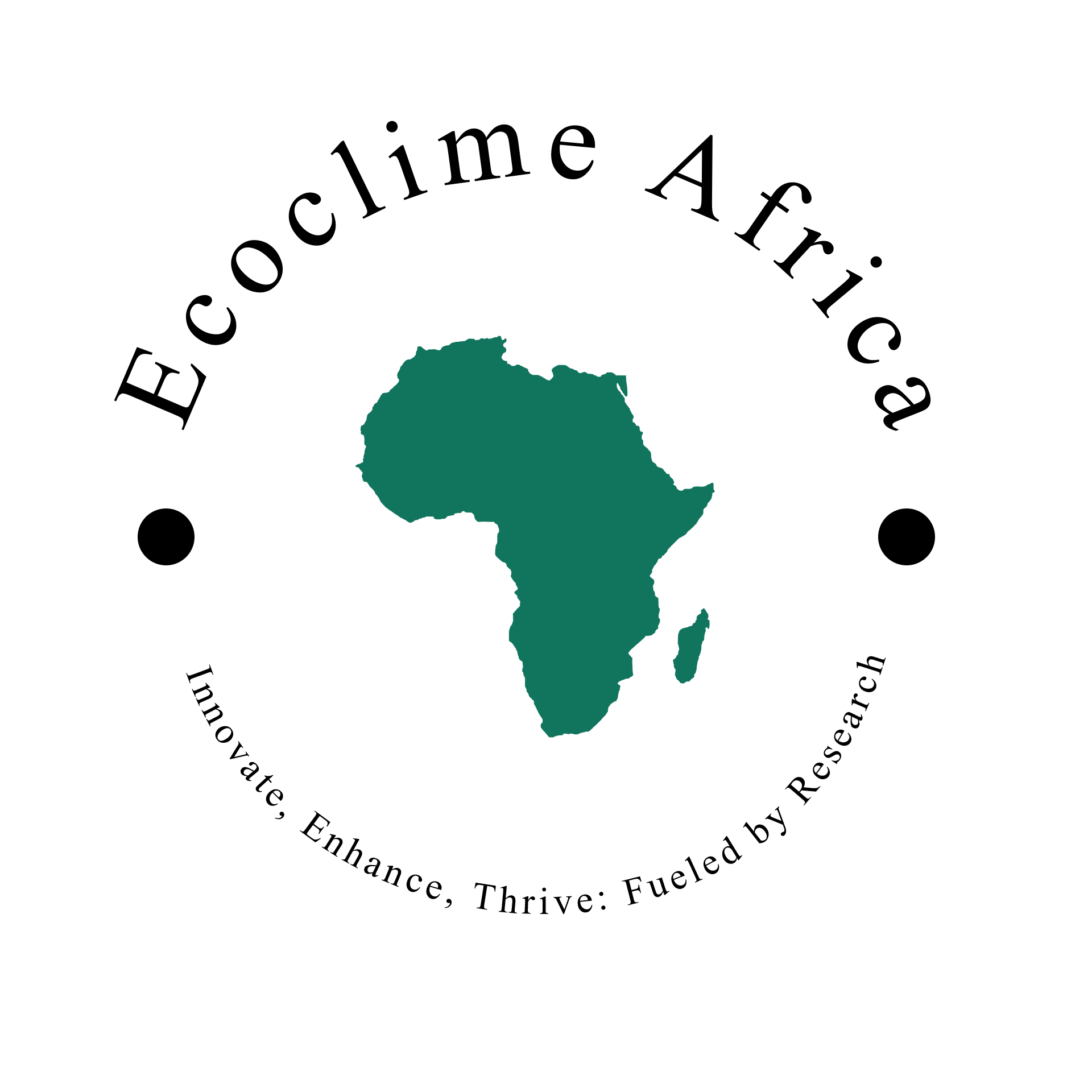
The Silent Killer: Outlawed Mineral Exploitation and Its Threat to Biodiversity
A case study of the 'gold rush era', the 'galamsey' pandemic, 'blood diamonds', and the mica struggle for 'blood money', and how these activities affect ecosystems.
According to an article published by National Geographic, “Biodiversity refers to all the different kinds of living organisms within a given area, including plants, animals, fungi, and other living things. It includes everything from towering redwood trees to tiny, single-cell algae that are impossible to see without a microscope.”
Biodiversity encapsulates the very sustenance of life on Earth. It is the central hub of all ecosystems and plays a pivotal role in climate regulation, food security, waste decomposition, economic stability, sustainable livelihoods, spirituality, and cultural identity, among others.
“The value of biodiversity is that it makes our ecosystems more resilient, which is a prerequisite for stable societies; its wanton destruction is akin to setting fire to our lifeboat.” - Johan Rockstorm
Two key ecosystems characterise biodiversity, namely;
- Terrestrial Ecosystems, which are subdivided into forests, grasslands, deserts, and tundra
Aquatic Ecosystems, also subdivided into
- freshwater ecosystems (lakes, rivers, ponds, and wetlands)
- marine ecosystems (oceans, coral reefs, estuaries, and coastal areas)
- lentic ecosystems (standing water bodies like lakes and ponds)
- lotic ecosystems (flowing water bodies like rivers and streams)
Biodiversity helps support co-dependency in ecosystems. Multiple organisms come together to make up an ecosystem. Mostly, one organism depends on another organism to survive, and the cycle repeats. When there is a disruption in the dependency chain, it poses a threat to the ecosystem and biodiversity generally.
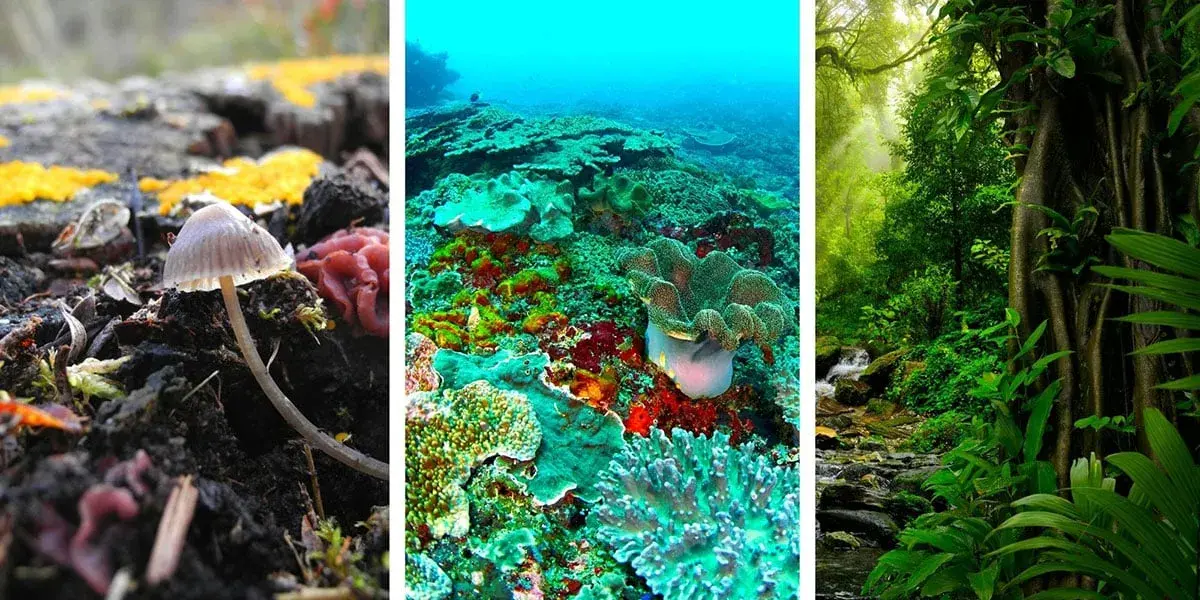
Humans are a major threat to biodiversity due to the radical exploitation of resources. Industrialisation and Urbanisation are leading factors in this degradation, and beneath this umbrella lies a silent killer: Outlawed Mineral Exploitation.
The Ordinance on Mineral Resources according to articles 19, 36, and 100 of the Constitution of the Socialist Republic of Vietnam, states in Chapter One, Article 1.4 that, “Mineral Exploitation means the act of extracting a mineral resource from a mine with the aim of producing mineral materials, minerals in their existing form, inground water, mineral water and hot water, (hereinafter referred to as mineral materials) in order to meet different needs and uses.”
“Our diversity as a people united is also our potential to transform our large deposits of mineral resources and use same for national development.” - Yemi Osinbajo
Minerals have been the backbone of economies for centuries. Past societies thrived on the mining and merchandising of these precious resources. In the 16th and 17th centuries, a mythical city of gold, known as ‘El Dorado’, sparked an uprising and a hunt for this city of wealth and fortune. This city was never found, but closely followed after this was the California Gold Rush in the 19th century. During this period, there was unrest and relentlessness in chasing after gold discovered by John Sutter when he was constructing his sawmill along the American River in Coloma, California. He and his partner, James W. Marshall, decided to keep their secret to themselves.
However, news of the newfound discovery spread like wildfire and beckoned thousands of people from the East and other parts of Europe to flee to the West in search of gold. By 1858, the height of the gold rush had passed, but in return, it brought over 300,000 new settlers to California, and the revenue from this hunt was instrumental in developing present-day San Francisco. Aside from its positive effects on the economy, it led to massive land degradation, and most mining sites were abandoned after the hunt.
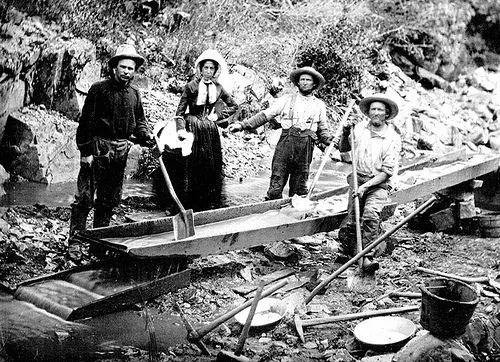
The cue to take about minerals is that they are non-renewable resources, unlike water and crops, which can be replenished easily. It takes thousands of years for new minerals to spring up underneath the Earth.
The ‘galamsey’ pandemic in Ghana is no different from the California Gold Rush era, except in this instance, there is a major rise in illegal mining in mineral-rich geographies of Ghana. This has been ongoing for more than a decade, and there have been recent attempts to mitigate it. Ghana is a flourishing land blessed with gold, manganese, bauxite, and diamonds. It is recorded among the world’s top 10 gold producers and the second largest in Africa after South Africa.
Thus, it is no surprise that there is much interest in mining its resources from natives and foreigners alike. The rise in illegal mining stems from most natives in gold-rich zones, who forfeit education and other income opportunities to benefit from the soil in which they were born. So they devise multiple means of extracting the gold and, unfortunately, sell it at meager rates to sustain their livelihoods without the necessary skills and equipment needed. This entitlement becomes a repulsion to foreigners and state-accredited mining businesses whose aim is to sustainably extract these resources, refine them, and sell them at a reasonable value to incur revenue, value addition, foreign exchange, and tax returns.
There are legal permits and licensing assigned to state-accredited mining companies to proceed with the mineral extraction. However, these small-scale mining groups default to all laws and practices concerning mineral extraction. Aside from the legal and economic restraints they impose, they are a major cause of the disruption of biodiversity in the mineral zones in Ghana.
“In Ghana, the number of people engaged in illegal artisanal mining activities, referred to locally as galamsey, expanded from perhaps 30,000 in 1995 (World Bank, 1995) to one million in 2006 (Bawa, 2006).” - excerpt from a research paper published by Sadia Mohammed Banchirigah, 2008.
According to a study conducted by a collective (Boadi, Nsor, Antobre et Acquah, 2016), it revealed that “Within 5 years, illegal mining had degraded 2.5 km2 (4.4%) of the total area of the reserve and the destruction of cocoa farms and water sources (31). Farming among respondents reduced from 90% to 76% after illegal mining.”
Forest reserves, water bodies, farmlands, aquatic animals, and land creatures suffer from these indiscriminate mining activities. It, in turn, also affects the human population living in those regions due to the harmful chemicals used during mining activities, contaminating their food and water, resulting in a rise in diseases and poor livelihoods.
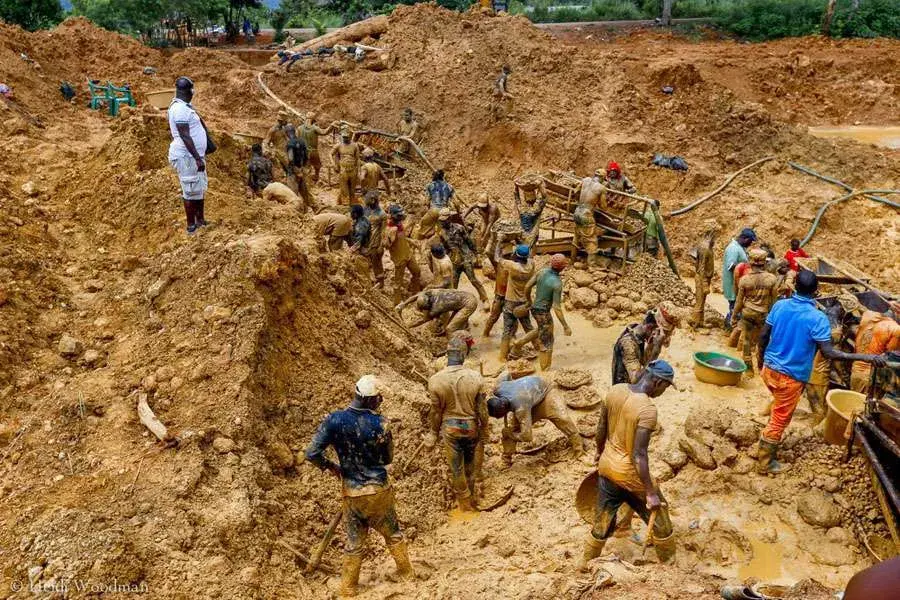
In the Democratic Republic of Congo, rising tensions and unrest are fueled by mineral wars. The country is abundant in numerous resources, but poor leadership and a massive influx of foreigners to mine these resources have left the inhabitants in utter distress.
Diamond is one of the predominant minerals that the DRC boasts of. It is Africa’s largest producer of diamonds and is the third-largest diamond-producing country in the world by volume. A rise in the illicit mining of the diamonds commonly known as ‘Blood Diamonds’ has caused gross tension in the region and a rise in environmental degradation, child labour, poor economic standing, and worst of all, militant groups.
The ‘Blood Diamonds’ pandemic has been a key topic that has been addressed for decades. There have been many attempts to track these illicit diamonds by several groups and institutions, but due to the numerous processes the diamonds go through before it is sold to a client as refined jewellery, the traceability becomes scarce. Profit made from these diamonds is used to finance militant groups such as the March 23 Movement (M23) and the Allied Democratic Forces (ADF) by providing them with ammunition. These groups then cause an uprising in the vicinity because of their allegiance to certain foreigners or wealthy citizens who sponsor the illicit extraction of the minerals.
"It's a scandal. We have so much wealth, yet we stay so poor. I can understand why you Americans say you don't want to buy our diamonds. Instead of blessings, our diamonds bring us nothing but misfortune." - Zacharie Mamba, head of Tshikapa's mining division said in an article published by Time Magazine on Blood Diamonds.
One can find children as young as six years old engaging in these practices because they have been brainwashed into believing it is a lucrative venture. Most of these kids come from rural families that have no stable source of income. Although the country is abundant in resources, it records high rates of financial indigence.
Aside from the political and social effects that the ‘Blood Diamonds’ have on the country, they also pose a significant environmental threat. The high rise in artisanal mining has led to a depletion of trees and water (Galli et al, 2022). Most of the artisanal mining activities practice the open-pit method, and miners usually abandon these sites and move on to other locations. It becomes difficult to reclaim these spots and develop the land for agriculture or infrastructure. Just like the practice in ‘galamsey’, mercury and other harsh chemicals are used in the artisanal mining process, leaving water bodies polluted.
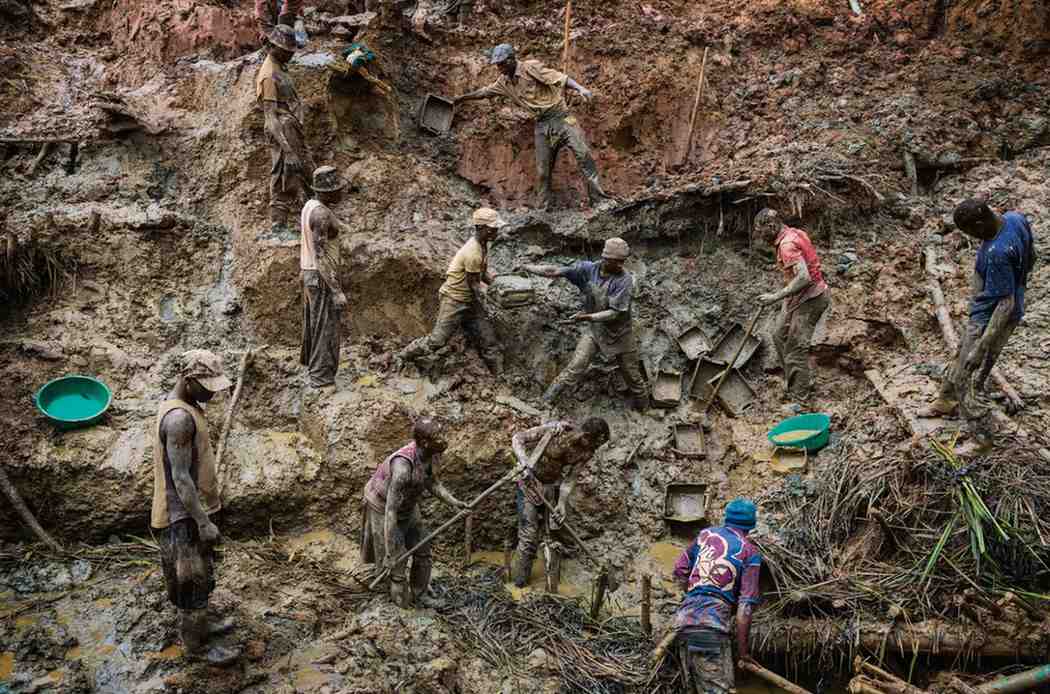
Mica mining in India is no different from the other mineral exploitation activities stated in the earlier paragraphs. The issue that runs through is that most of these resources are located in second and third-world countries where access to basic amenities and stable income is an issue. Thus, it provides access for opportunists to exploit the rural people as well as the resources. Mica is a valuable mineral in India and accounts for the top 10 raw materials used in the cosmetic and automotive industry. According to statistics by the World Integrated Trade Solution & World Bank in 2023, India ranked as the second-largest exporter of mica powder after China, taking first place.
"Multinationals are aware of child labour in mica mines, but once this data is out, we will push the companies to act,"- said Bhuwan Ribhu of the Kailash Satyarthi Children's Foundation (KSCF), which has partnered with the Jharkhand state government to end child labour in mines in an article published by Reuters on Illegal Mica Mining, 2018.
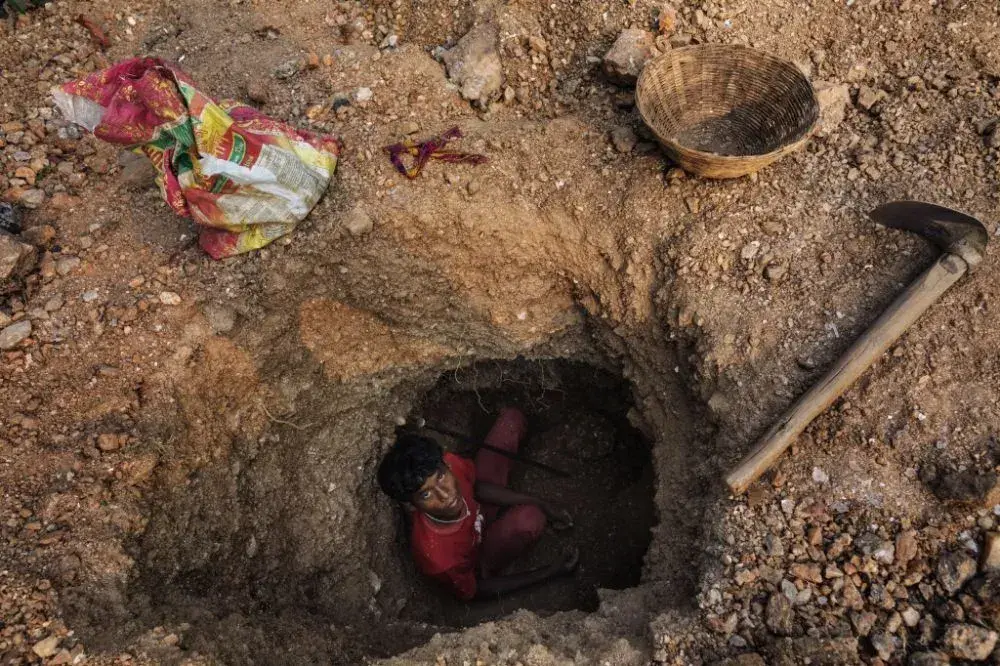
The best solution for dealing with outlawed mineral exploitation is to implement detailed and stricter laws and penalties for all defaulters. Individuals who are charged by the law will serve as a deterrent for others. To back this, appropriate monitoring and surveillance should be instituted at these sites to ensure good utilization and preservation of the resources. Also, it should be a crucial demand to carry out random checks for licensing and permits. Occasional site raids should also be conducted to eliminate unlawful miners.
Community engagement coupled with appropriate sensitisation is another way of dealing with the issue. Inhabitants should be educated on the negative impacts of artisanal and small-scale mining of minerals. Additionally, the provision of alternative economic opportunities for settlers should be explored and made available to prevent the interest and trend in illicit mining. Various governments should agree on suitable community development projects to preserve the authorized mining of the resources, as well as cater to the essential developmental needs of the mining communities.
“In addition to its commitment to protecting biodiversity throughout the mining process, the company has undertaken various restoration initiatives following the completion of mining operations to bring back the natural environmental equilibrium, conserve water, and encourage the re-establishment of native plant and animal life.” - said PanAfrican Resources in an article published on Sustainable Mining Practices, July, 2024.
Sustainable mining practices should be encouraged to prevent further depletion of biodiversity. This follows closely after the two points raised earlier have been executed. Once the right mining laws are applied and the mining communities are given other sources of livelihood, the unlawful mining sites will be available for the appropriate environmental rehabilitation to be carried out.
Curbing the issue of outlawed mineral exploitation is not beyond reach. It is a course that requires the participation of every individual, from everyday citizens to global leaders. In this light, the collaborative and conscious effort will help reduce the degrading impacts it has on economies, biodiversity, and society at large.
Author : SOLVEIG ABENA LARBIE-TETTEH
Comments
No comments available.